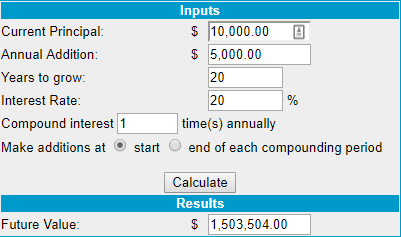
Pullback entry
A pullback describes a market's reversal towards the trend's origin point. Depending on the trend, a drawback can be both deep and shallow. You can identify this using indicators such Fibonacci levels or moving averages. The more signals you have, your decision will be more reliable.
A pullback is part of any uptrend. It can happen due to a sudden drop, profit taking, or negative news regarding the underlying stock. Pullbacks are often used by trend-following traders to add or subtract from long positions. You can use buy limit orders, stop buy entry orders, and market orders to enter at these times.
Breakout strategy
Breakout strategies are very important in trading. It allows traders the ability to enter trades when prices move outside of their range. This strategy helps traders capitalize on the upcoming trend instead of waiting for a longer-term trend. Trading strategies that are more effective than price patterns will often be better for traders.

Breakouts often occur close to designated resistance trends lines. A failed breakout is usually when the key breakout levels fail to hold and the price loses momentum. It is crucial to establish the time period during which price will stay in the breakout. In addition, traders should identify the profit and risk levels of their trade. The trader should be willing to take on the same risk as the profit they expect to make.
Day trading carries risks
Unlike long-term investors, day traders are often required to make split-second decisions. They must keep track of economic factors, market trends, and news cycles. They also need to know the intricacies and nuances of specific products or industries. These investors could make big profits or lose their money. Margin calls are another issue that day traders may experience, which could make it impossible for them to return their investment.
Day trading has many risks. It takes a lot of concentration to follow the prices of dozens of stocks, so traders who can't manage their stress may end up making mistakes. Traders should try to stay away from emotion when making investment decisions. You can also use the buy-and-hold strategy. This involves studying different companies and deciding which one to buy.
Strategies used
There are many day-trading strategies available, but the most common is the gap and Go strategy. This strategy seeks stocks with a steady uptrend and moderate retracements. Finding a low-risk entry point price is key to successful trades. Trendlines and moving Averages are great indicators for this. The trade's risk/reward ratio should not exceed 1:1.

Day trading strategies can help you minimize your risk and maximize your profits. Once you have selected a particular strategy, it is time to decide on which instruments to trade in. You can choose from stocks, ETFs, futures, commodities, and options.
FAQ
How are securities traded?
The stock market lets investors purchase shares of companies for cash. Shares are issued by companies to raise capital and sold to investors. Investors can then sell these shares back at the company if they feel the company is worth something.
Supply and Demand determine the price at which stocks trade in open market. The price goes up when there are fewer sellers than buyers. Prices fall when there are many buyers.
You can trade stocks in one of two ways.
-
Directly from your company
-
Through a broker
What is a "bond"?
A bond agreement is an agreement between two or more parties in which money is exchanged for goods and/or services. It is also known by the term contract.
A bond is usually written on paper and signed by both parties. This document details the date, amount owed, interest rates, and other pertinent information.
A bond is used to cover risks, such as when a business goes bust or someone makes a mistake.
Sometimes bonds can be used with other types loans like mortgages. The borrower will have to repay the loan and pay any interest.
Bonds are also used to raise money for big projects like building roads, bridges, and hospitals.
It becomes due once a bond matures. The bond owner is entitled to the principal plus any interest.
Lenders lose their money if a bond is not paid back.
What is the role and function of the Securities and Exchange Commission
Securities exchanges, broker-dealers and investment companies are all regulated by the SEC. It enforces federal securities laws.
How are shares prices determined?
Investors set the share price because they want to earn a return on their investment. They want to earn money for the company. So they purchase shares at a set price. Investors will earn more if the share prices rise. If the share price falls, then the investor loses money.
An investor's main objective is to make as many dollars as possible. This is why they invest. It helps them to earn lots of money.
Why is a stock called security?
Security is an investment instrument whose worth depends on another company. It can be issued as a share, bond, or other investment instrument. The issuer promises to pay dividends and repay debt obligations to creditors. Investors may also be entitled to capital return if the value of the underlying asset falls.
Is stock a security that can be traded?
Stock is an investment vehicle where you can buy shares of companies to make money. You do this through a brokerage company that purchases stocks and bonds.
You could also choose to invest in individual stocks or mutual funds. There are over 50,000 mutual funds options.
The key difference between these methods is how you make money. Direct investment is where you receive income from dividends, while stock trading allows you to trade stocks and bonds for profit.
Both of these cases are a purchase of ownership in a business. However, if you own a percentage of a company you are a shareholder. The company's earnings determine how much you get dividends.
With stock trading, you can either short-sell (borrow) a share of stock and hope its price drops below your cost, or you can go long-term and hold onto the shares hoping the value increases.
There are three types: put, call, and exchange-traded. Call and Put options give you the ability to buy or trade a particular stock at a given price and within a defined time. ETFs can be compared to mutual funds in that they do not own individual securities but instead track a set number of stocks.
Stock trading is very popular since it allows investors participate in the growth and management of companies without having to manage their day-today operations.
Stock trading is a complex business that requires planning and a lot of research. However, the rewards can be great if you do it right. If you decide to pursue this career path, you'll need to learn the basics of finance, accounting, and economics.
Statistics
- Our focus on Main Street investors reflects the fact that American households own $38 trillion worth of equities, more than 59 percent of the U.S. equity market either directly or indirectly through mutual funds, retirement accounts, and other investments. (sec.gov)
- Ratchet down that 10% if you don't yet have a healthy emergency fund and 10% to 15% of your income funneled into a retirement savings account. (nerdwallet.com)
- US resident who opens a new IBKR Pro individual or joint account receives a 0.25% rate reduction on margin loans. (nerdwallet.com)
- Even if you find talent for trading stocks, allocating more than 10% of your portfolio to an individual stock can expose your savings to too much volatility. (nerdwallet.com)
External Links
How To
How to open and manage a trading account
The first step is to open a brokerage account. There are many brokers on the market, all offering different services. There are many brokers that charge fees and others that don't. Etrade is the most well-known brokerage.
Once you've opened your account, you need to decide which type of account you want to open. You can choose from these options:
-
Individual Retirement Accounts (IRAs).
-
Roth Individual Retirement Accounts
-
401(k)s
-
403(b)s
-
SIMPLE IRAs
-
SEP IRAs
-
SIMPLE SIMPLE401(k)s
Each option has its own benefits. IRA accounts offer tax advantages, but they require more paperwork than the other options. Roth IRAs give investors the ability to deduct contributions from taxable income, but they cannot be used for withdrawals. SIMPLE IRAs and SEP IRAs can both be funded using employer matching money. SIMPLE IRAs have a simple setup and are easy to maintain. They allow employees and employers to contribute pretax dollars, as well as receive matching contributions.
Finally, determine how much capital you would like to invest. This is also known as your first deposit. Most brokers will offer you a range deposit options based on your return expectations. Depending on the rate of return you desire, you might be offered $5,000 to $10,000. This range includes a conservative approach and a risky one.
After choosing the type of account that you would like, decide how much money. Each broker has minimum amounts that you must invest. These minimum amounts can vary from broker to broker, so make sure you check with each one.
You must decide what type of account you want and how much you want to invest. Next, you need to select a broker. Before selecting a brokerage, you need to consider the following.
-
Fees: Make sure your fees are clear and fair. Many brokers will offer rebates or free trades as a way to hide their fees. However, some brokers raise their fees after you place your first order. Be wary of any broker who tries to trick you into paying extra fees.
-
Customer service: Look out for customer service representatives with knowledge about the product and who can answer questions quickly.
-
Security - Make sure you choose a broker that offers security features such multi-signature technology, two-factor authentication, and other.
-
Mobile apps - Check if the broker offers mobile apps that let you access your portfolio anywhere via your smartphone.
-
Social media presence – Find out if your broker is active on social media. If they don’t have one, it could be time to move.
-
Technology - Does this broker use the most cutting-edge technology available? Is the trading platform easy to use? Are there any glitches when using the system?
Once you have selected a broker to work with, you need an account. While some brokers offer free trial, others will charge a small fee. After signing up, you'll need to confirm your email address, phone number, and password. Next, you will be asked for personal information like your name, birth date, and social security number. Finally, you'll have to verify your identity by providing proof of identification.
Once verified, your new brokerage firm will begin sending you emails. These emails contain important information about you account and it is important that you carefully read them. The emails will tell you which assets you are allowed to buy or sell, the types and associated fees. Be sure to keep track any special promotions that your broker sends. These promotions could include contests, free trades, and referral bonuses.
The next step is to open an online account. Opening an account online is normally done via a third-party website, such as TradeStation. Both of these websites are great for beginners. When you open an account, you will usually need to provide your full address, telephone number, email address, as well as other information. Once you have submitted all the information, you will be issued an activation key. This code will allow you to log in to your account and complete the process.
After opening an account, it's time to invest!